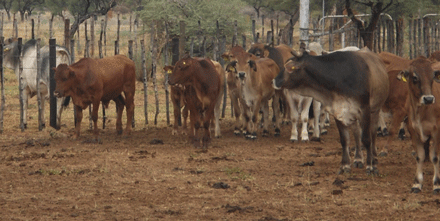
UN’s Food and Agricultural Organisation on the impact of regional drought
23 December 2016 – The UN agency, the Food and Agricultural Organisation in collaboration with the FAO sub-regional Office for Southern Africa (FAO SFS), conducted an assessment mission to determine the impact of the drought in the three regions most affected, Erongo, Kunene and Omusati.
Recurring drought conditions, caused by erratic and persistently below normal rainfall during the 2013/14, 2014/15 and 2015/16 seasons, severely affected agricultural production in most parts of the country, but specifically in the three target regions.
This adversely affected the food security of the subsistence farmers by reducing their access to food and potential income from sale of agricultural products. The poor condition of their animals also resulted in poor stock prices at auctions and through direct sales.
The FAO assessment was done to formulate an emergency response, and relief programme for future events.
The FAO issued a report upon conclusion of the assessment phase, listing the impact of El Nino and the detrimental effect on nutrition. The report lists a number of interventions to prevent a repeat of the current calamity.
The assessment utilised a mixed methodology involving the administration of structured key respondent interviews, focus group discussions, direct observation, and market assessment for the gathering of primary data. The report presents data collected and analysed from 100 respondents, 8 groups and 6 market surveys.
The assessment revealed that, under normal conditions, 97% of the communities in Omusati rely on crop production while in Kunene it is only 20%. Their biggest reliance is on livestock (72%). Similarly, in Erongo crops are less important while 96% of households rely on livestock.
Pearl millet (mahangu) and maize were the main crops cultivated in terms of area allocated in Kunene and Omusati regions respectively during the 2015/16 season. The average crop losses for maize were 94.7% and 72.6% in Omusati and Kunene regions respectively.
The FAO report advises that communities in Kunene must be assisted by drilling more boreholes and equipping these with solar pumps, to reduce the cost of the water. This will help the communities in this otherwise arid environment, to plant some crops on a limited scale. Secondly, the crop fields must be fenced to reduced damage by wildlife to the minimum.
For the people of Omusati, it is also advised that more boreholes be drilled and equipped with solar pumps, but since rainfall here is generally higher than in Kunene, the rehabilitation of existing water channels is seen as a top priority. Furthermore, draught animals are always a problem for ploughing and planting, hence subsidised ploughing with tractors and ploughs, is required.
The assessment revealed that at least 70% of the interviewed communities in the 3 regions own goats and poultry. Of the households owning cattle the average herd sizes are 30, 25 and 13 in Erongo, Kunene and Omusati regions respectively.
Generally the results show that, of all livestock, cattle were affected most by the drought. At the time of the assessment, most cattle were emaciated and close to death.
Meanwhile, the assessment also revealed that the Erongo region had the lowest proportion of households (27.5%) with access to adequate water supplies for livestock, in comparison to Kunene (48.3%) and Omusati (80.1%).
Top of the list in all three regions are water provision and hay or fodder as emergency feeds.












































